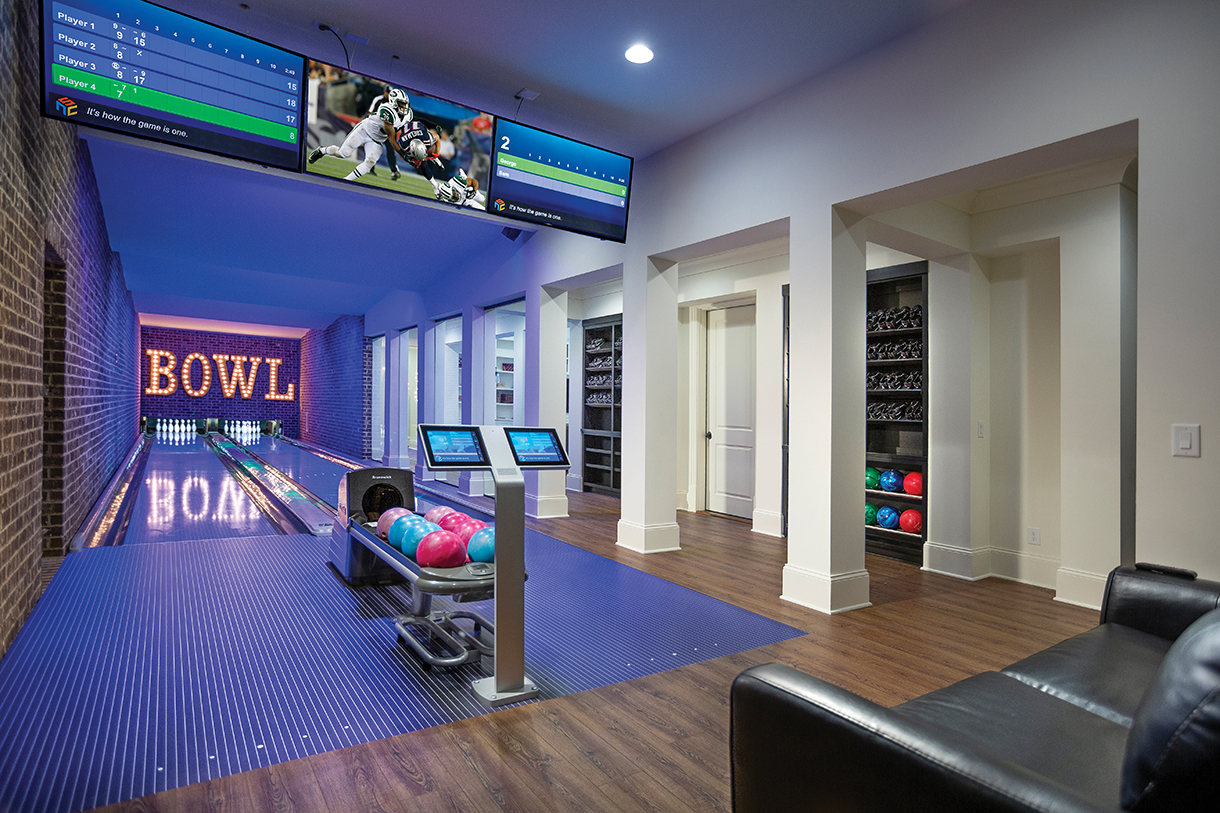
Home Field Advantage
If you’ve ever fantasized about installing a professional-grade sports amenity at home, there’s likely a specialized company that can make that dream a reality. Whether you love the idea of bowling strikes or sinking putts—even dribbling on pro-quality parquet courts, skating on smooth sheets of ice, or shredding on a never-ending wave—the following businesses can make your residential fantasy a reality.
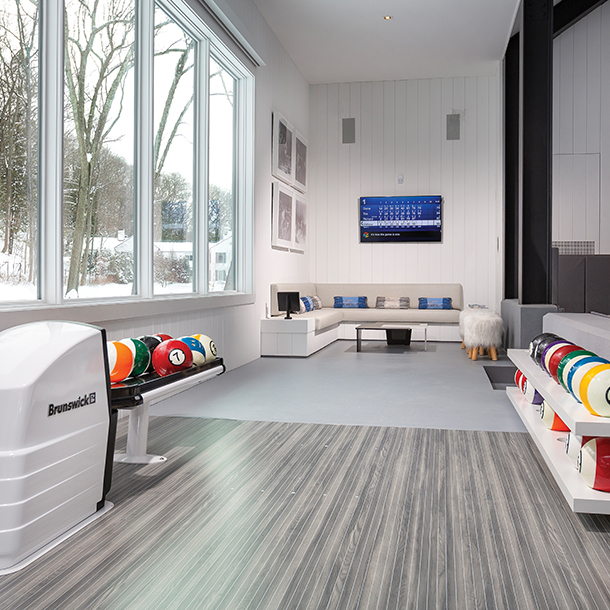
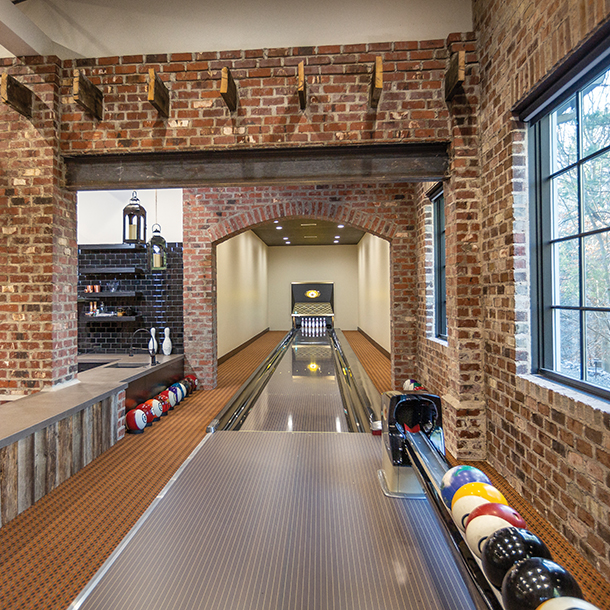
Lucky Strikes
Bowling can be an excellent social activity, so it makes sense that homeowners with a penchant for entertaining love the idea of adding a few lanes to their homes. Retrofitting a residence with regulation-size lanes, however, isn’t an easy task, since a couple of lanes typically require an area 100 feet long and 15–20 feet wide. “That type of room usually has to be designed into the house from the beginning,” says Ryan Claxton, the co-founder of Fusion Bowling. “It’s an optical illusion that bowling alleys seem shorter, but they do actually take up that much length.”
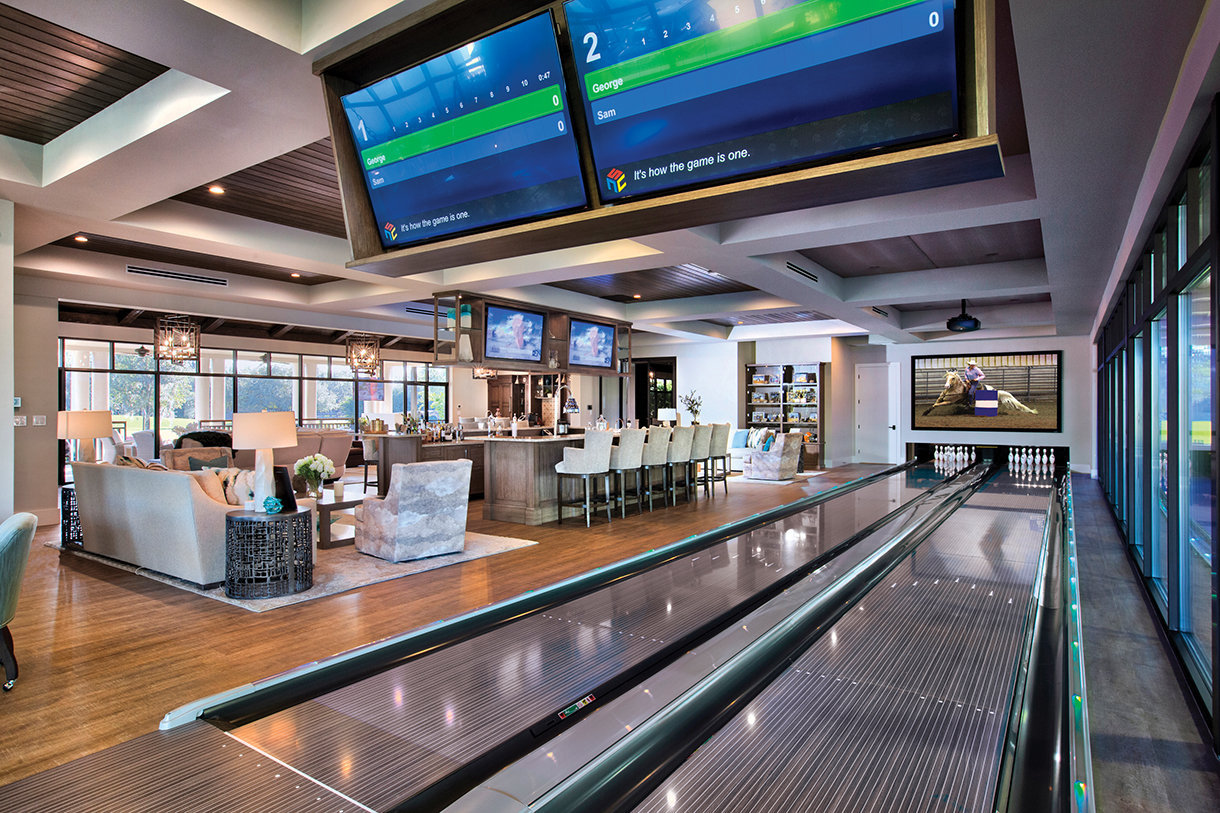
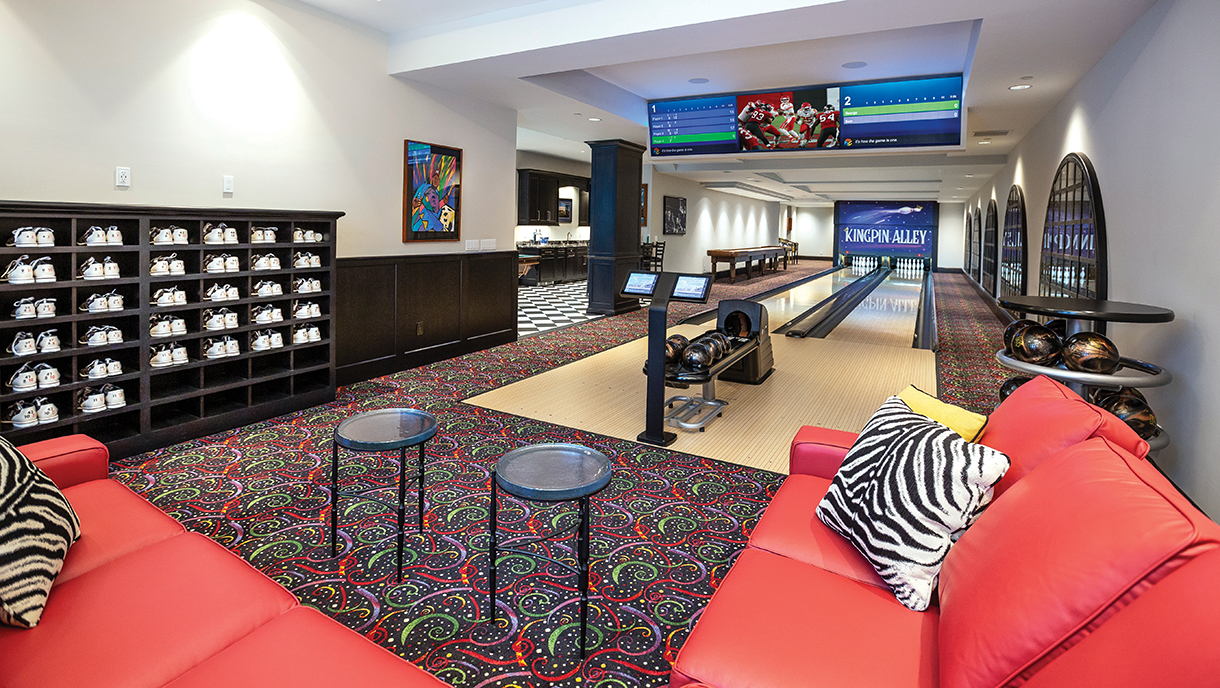
Because Fusion Bowling specializes in residential lanes, the company utilizes the industry’s best-performing machinery—Brunswick pinsetter machines and Samsung commercial monitors with touchscreen controls. “Homeowners don’t have a mechanic on duty like you do at a bowling center, so reliability is key,” Claxton explains. “You want to know you can turn it on and it just runs.”
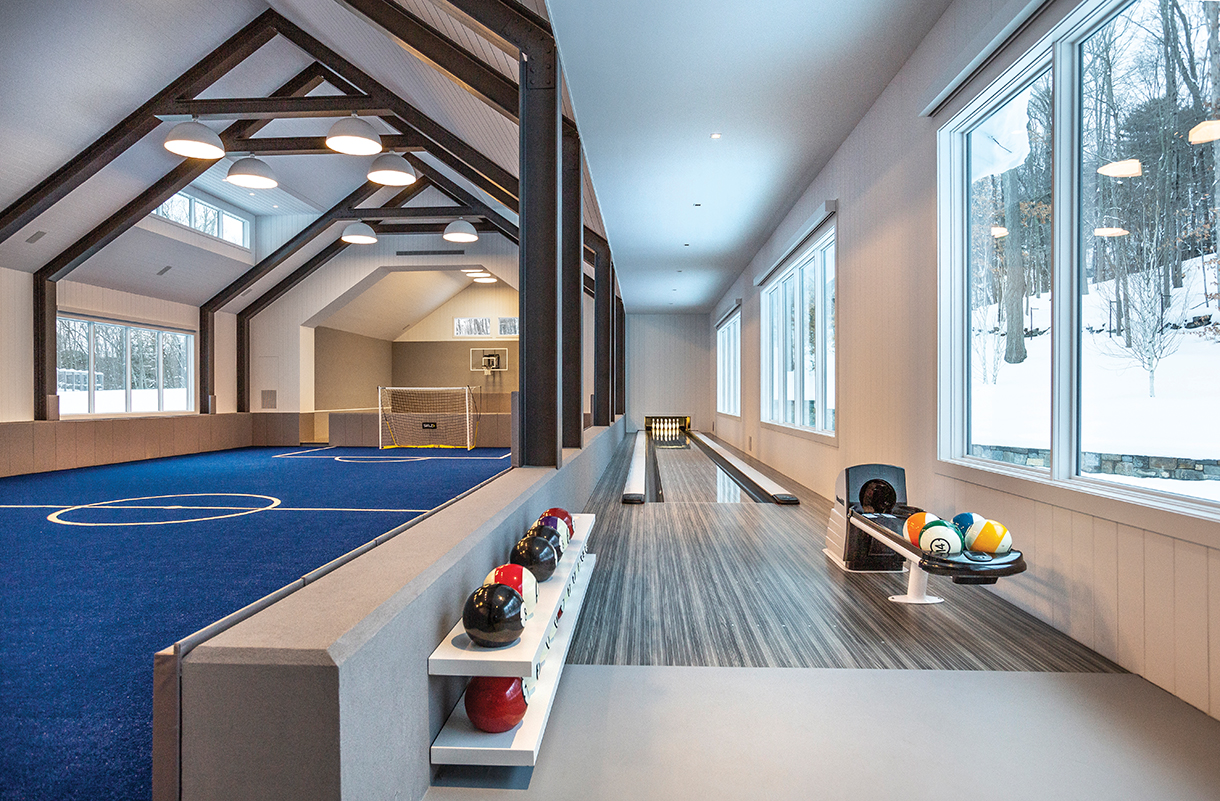
Fusion Bowling also readily takes on custom projects, which typically include unusual wood tones—dark maple or faded gray, for example—and other aesthetic features. To date, one of Claxton’s favorite projects involved the installation of four lanes in the basement of a sprawling Hawaiian villa. “The room was filled with exotic hardwoods on the floor and ceiling, and the back wall behind the lanes featured a backlit stylized wave pattern,” he says. “It was just a cool-looking room.” fusionbowling.com
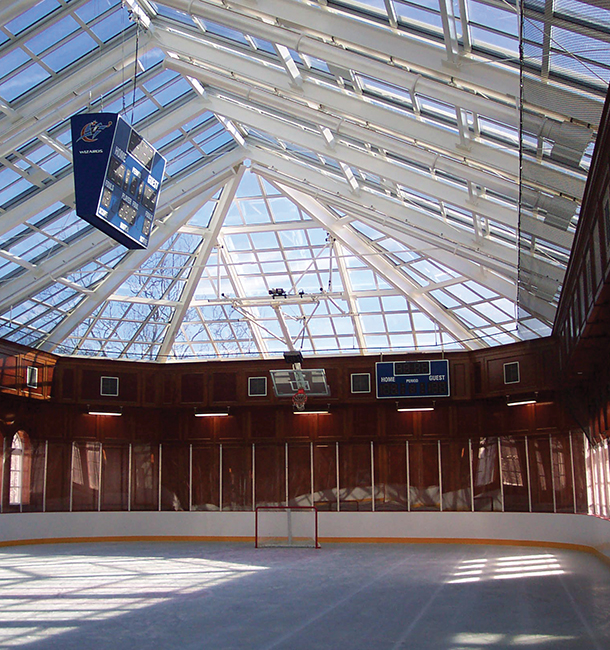
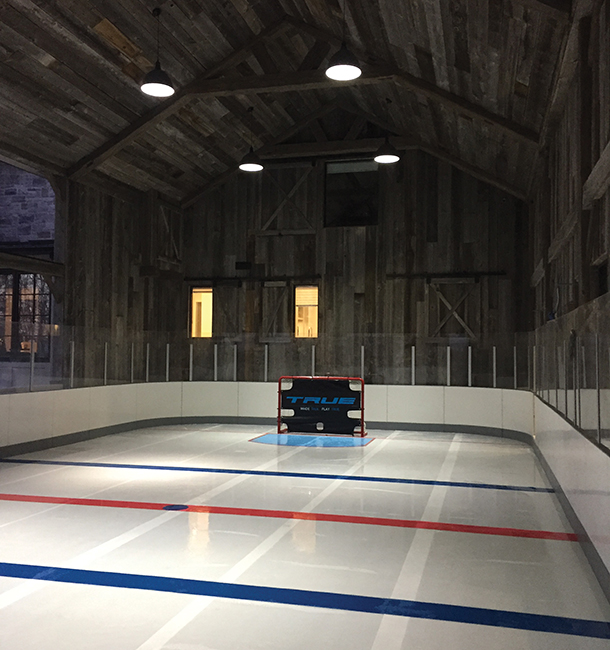
Ice Breakers
Twenty-two years ago, former NHL player Dave Gagner commissioned the design of a private outdoor ice rink for his backyard, which sparked the creation of Custom Ice Inc., a company that now specializes in private residential skating surfaces that start around $30,000. “The biggest thing that changed was scope and scale,” says Glenn Winder, the company’s vice president and partner. “We’re now building full-size NHL rinks for people’s private homes.”
For residences located north of the 40th parallel, Custom Ice can build permanent outdoor rinks that make skating possible for about 16 weeks out of the year (generally from Thanksgiving to St. Patrick’s Day). The company also designs and builds insulated indoor rinks that can be based anywhere in North America. Those indoor, insulated projects typically carry a 40-percent premium over outdoor rinks of the same size, due to the necessary infrastructure.
Although Custom Ice doesn’t build the structures that will house a year-round rink, its team will work closely with general contractors and architects, sharing CAD designs, installing the rink components, and guiding those builders through additional insulation requirements. “We’re a design-build company,” says Winder, “so we’re well prepared for that.”
With more than 1,000 ice rink projects under its belt, the company can capably handle a vast array of special commissions. Over the years, it’s produced rinks outfitted with full player boxes, score clocks, sound systems, strobe lighting, in-ice logos, and luxurious dressing rooms. “Not many people will go to that extreme,” he says. “But we do get people who want the whole ice arena look.” customicerinks.com
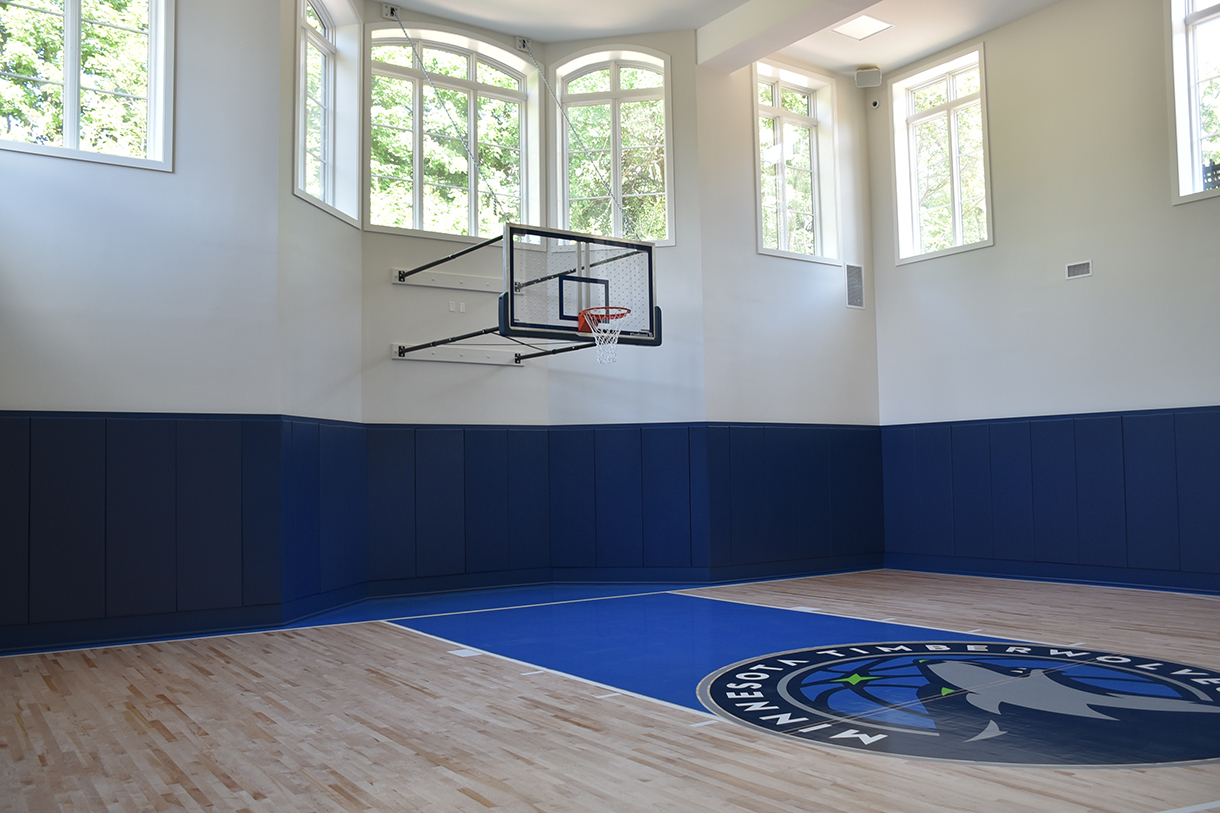
Supreme Courts
Want to bank in a layup on the New York Knicks’ parquet floor or shoot a step-back jumper for three at the Staples Center? SportProsUSA makes these dreams come true—sort of. While the company can’t get you into either arena—and it certainly can’t put you on their respective basketball courts—it can design and build an indoor court for your home that offers the same quality playing experience. “We’ve added scoreboards and [wall] graphics and NBA seats that you can put along the sidelines,” says Thomas Petersen, the company’s president. “You can take it to the extreme. We can make your court look like you’re standing in the middle of Madison Square Garden.”
SportProsUSA has specialized in high-end residential basketball courts since Petersen founded the company in 2006, and today it can install those courts with basketball systems produced by a company that has equipped NBA arenas for almost 25 years. Although new home builds are easier projects to execute, Petersen says that retrofitting homes is also possible. In both cases, basement installations are the most efficient approach, so long as they’re dug (or re-excavated) to the proper depth. For home projects in New York and New Jersey, SportProsUSA can handle all aspects of the installation (half-court projects typically range from $35,000 to $75,000). For projects based in other states, Petersen and his team offer guidance and design help, and they’ll connect clients with trusted partners and affiliates to undertake the physical construction. sportprosusa.com
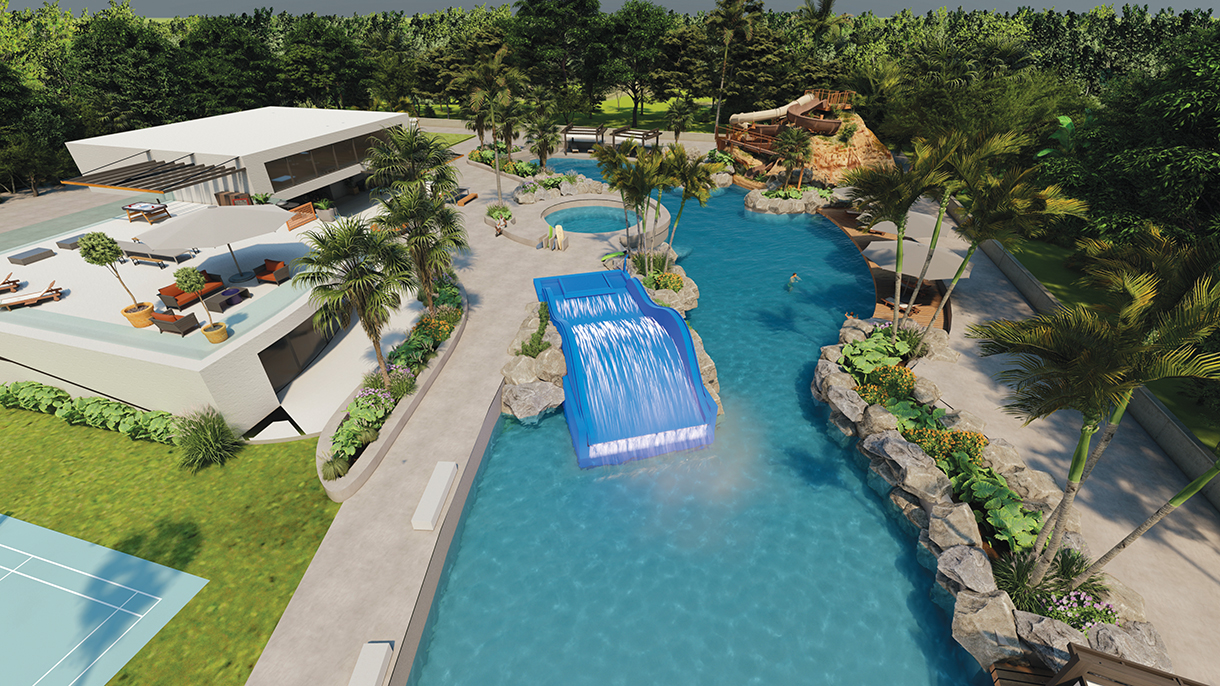
Wave Catchers
If you’ve taken a Royal Caribbean cruise in recent years or visited one of several hundred water parks that feature a FlowRider stationary wave system for surfing, you’ve likely been impressed by its capabilities. What you may not know is that those same FlowRider systems can be installed in private residences. To date, about a dozen of those residential installations have been completed, though that number could soon increase dramatically with the company’s latest model, the FlowRider Edge.
Occupying a footprint that’s about half the size of a FlowRider Double (the company’s most popular commercial model), the FlowRider Edge also carries a lower price tag—$475,000 compared to about $1 million. “Either of those products could go in your backyard, it’s just a function of space and cost,” says Marshall Myrman, the company’s president. “It’s probably most relevant to Southern California, the Southwest, and the Southeast—warmer climate regions. But I wouldn’t put it out of reach for someone living in the Northeast.”
According to Myrman, every FlowRider model is an extension of the same stationary wave system. In the case of the FlowRider Edge, the wave height was lowered by 6 inches and the device features an inflatable ride surface, rather than a trampoline, which makes it less intimidating (and more comfortable). “It’s much more enjoyable to land on this than anything else I’ve experienced in the stationary wave industry,” Myrman says.
As for what the FlowRider experience is like, Myrman acknowledges that it can be a hybrid of surfing, but it really simulates all board sports, including the winter ones. “Riding a flowboard,” he says, “is like snowboarding in powder.” flowrider.com
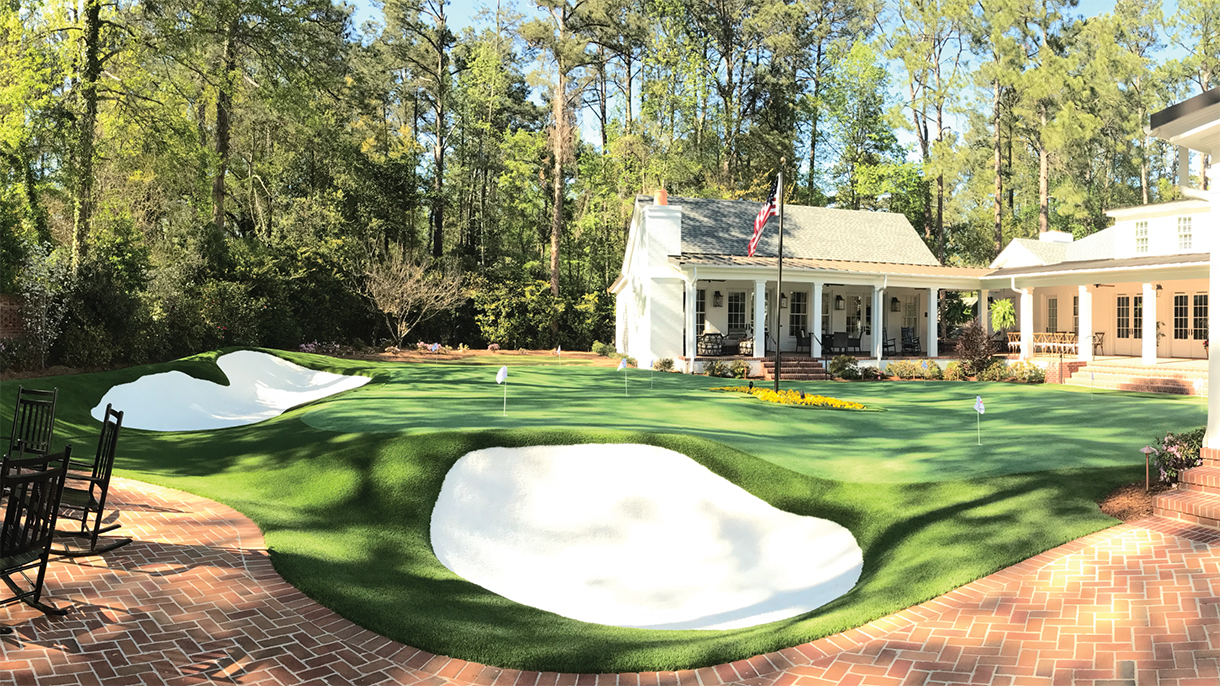
Backyard Bunkers
Avid golfers who are looking to squeeze in a bit more short-game practice can do so with style and minimal maintenance thanks to the artificial putting surfaces that are designed and built by Back Nine Greens. For more than two decades, the company has outfitted the backyards of discerning golf enthusiasts, including tour pros.
One such former player even joined the company as a partner. “I wanted a tour-speed green,” says Dave Stockton Jr., who played as a professional for more than a decade. “They did it perfectly, which is why I got involved in the company. I couldn’t believe what they built in my backyard.”
Stockton Jr. now oversees the company’s luxury division, which designs and builds elaborate putting greens accented by artificial bunkers in various shapes and sizes. Those lifelike bunkers are made of a more wiry style turf than the styles used for rough, fringe, and the actual putting surface; and Stockton Jr. asserts that it realistically simulates sand-filled bunkers. “You have to make the same kind of swing you would in a normal bunker,” he says. “Sweeping underneath it and finishing high.”
The cost of a simple Back Nine green without bunkers starts at $18 per square foot, whereas the company’s contoured, bunker-accented luxury greens can cost as much as $40 per square foot. For luxury commissions, Back Nine Greens also employs a shaper who previously worked with many revered course architects, including Tom Fazio and Jack Nicklaus. “We construct it just like you would a golf green anywhere,” says Dominic Nappi, the company’s founder and president. He’s quick to add: “Some tricks of the trade are also involved.” backninegreens.com




